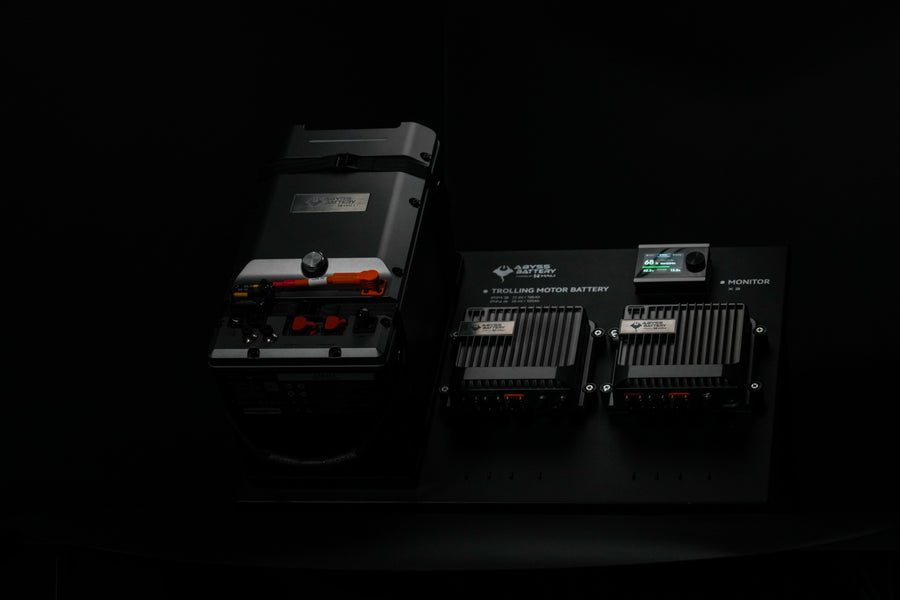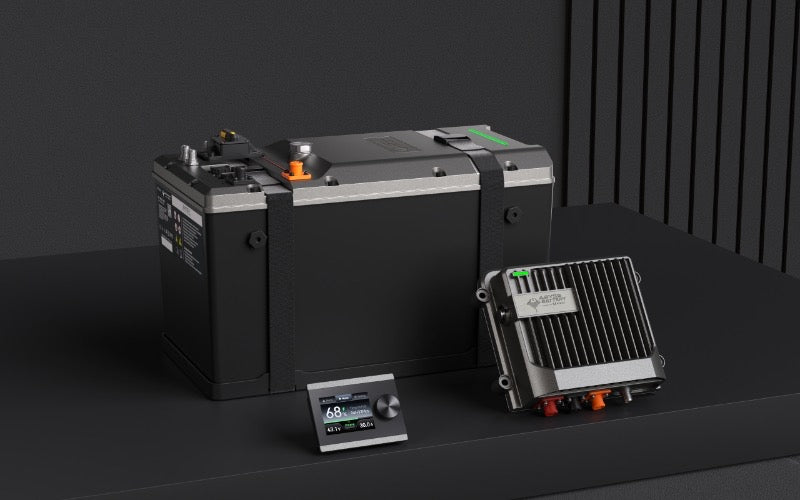Lithium Iron Phosphate Battery: Marine Game-Changer

When it comes to powering your marine adventures, the choice of battery is more than just a matter of energy. It can define the very experience of your journey on the water. Among the many options available, lithium and sealed lead acid (SLA) batteries stand out. These two battery types come with their own sets of features, performance capabilities, and environmental impacts, all of which are crucial to consider for anyone invested in marine activities. In this review, we'll explore these aspects, helping you make an informed decision for your maritime needs.
The Basics of Battery Types
Understanding the different types of batteries is key to selecting the right one for your boat. Basically, batteries are essential for marine equipment, storing energy when it's not in use and making it available on demand. Here's a simple breakdown of how batteries work:
- Energy Storage: Batteries store energy in chemical form within their cells. When you charge a battery, you're essentially filling it up with energy, much like you would fill a water tank.
- Energy Release: When you need power, the battery converts the stored chemical energy back into electrical energy. This process powers your marine equipment, from navigation systems to trolling motors.
In the following sections, we'll take a closer look at lithium and SLA batteries, comparing their efficiency, performance, and suitability for marine conditions. Stay tuned as we dive deeper into the world of marine batteries and discover what makes each type tick.
Deep Dive into Lithium Batteries
When it comes to powering marine equipment, lithium batteries stand out for their modern technology and impressive benefits. These batteries are known for their:
- High energy density, which means they can store more power in a smaller space compared to many other battery types.
- Lightweight nature, making them easier to handle and reducing the overall weight of the equipment they power.
- Longer lifespan, often lasting several times longer than traditional batteries under similar conditions.
- Fast charging capabilities, enabling quicker turnaround times between uses.
- Low maintenance, as they do not require regular watering or equalization charges.
Studies, such as those conducted by the U.S. Department of Energy, have shown that lithium battery efficiency and performance are superior in many aspects. This makes them a strong choice for marine applications where reliability is crucial.
Sealed Lead Acid (SLA) Batteries Explained
Sealed lead acid batteries have been a mainstay in the marine industry for years. They are valued for their.
- Proven technology, with a long history of reliable use in various settings.
- Cost-effectiveness, often being more affordable upfront than lithium options.
- Availability, as they are widely accessible and come in standard sizes and capacities.
However, SLA batteries do have some limitations. They are heavier, require regular maintenance, and have a shorter lifespan compared to lithium batteries. The Battery University provides detailed insights into the lifespan and maintenance of SLA batteries, helping users understand the commitment required for their use.
Maintenance tasks for SLA batteries typically include:
- Keeping the battery terminals clean to ensure good conductivity.
- Regularly checking the charge level to avoid deep discharge, which can harm the battery.
- Ensuring that the batteries are stored in a cool, dry place to extend their service life.
Lithium vs Sealed Lead Acid: A Comparative Analysis
- Power Output: Lithium batteries generally offer higher energy density, meaning they can deliver more power without the bulk. SLA batteries, while reliable, are heavier and have a lower energy density.
- Recharge Times: Lithium batteries charge faster than SLA batteries. They can often reach a full charge in a fraction of the time it takes an SLA battery, which means less downtime and more time on the water.
- Durability: Lithium batteries tend to have a longer lifespan, going through more charge cycles. SLA batteries have a shorter life in comparison and will need to be replaced more frequently.
Supporting these comparisons, data from credible sources like the U.S. Department of Energy highlight the efficiency and longevity of lithium batteries over their SLA counterparts.
Environmental Considerations of Battery Types
The impact of batteries on the environment is an important consideration. Here's how lithium and SLA batteries stack up:
- Production: The production of lithium batteries is more energy-intensive, but advances in technology are continually reducing this impact.
- Disposal: Lithium batteries are typically more environmentally friendly when disposed of properly, as SLA batteries contain lead, which is toxic and requires careful handling.
- Recycling: Both battery types are recyclable, but lithium batteries are often easier to recycle due to their lack of toxic heavy metals.
Studies such as those published by the International Journal of Life Cycle Assessment provide further insights into the environmental impacts of different battery types, emphasizing the importance of responsible use and disposal.
Performance in Marine Conditions
When it comes to powering your boat, the reliability of your battery is crucial. Marine conditions can be tough, with constant exposure to elements like saltwater, humidity, and temperature fluctuations. It's important to understand how different battery types hold up in these conditions.
- Lithium Batteries: Known for their toughness, lithium batteries handle marine environments well. They are less prone to damage from deep discharges and can recover quickly. Plus, they maintain a consistent power output, even when the battery is running low.
- Sealed Lead Acid Batteries: While SLA batteries are commonly used in marine settings, they can be sensitive to deep discharges and may require more frequent maintenance. They also tend to lose power more quickly in cold conditions, which can be a concern in marine environments.
For those who spend a lot of time on the water, lithium batteries from Abyss Battery® could be a game-changer, offering longer life and better performance, especially under the demanding conditions of marine use.
Innovations in Marine Battery Technology
As we look to the future, battery technology continues to advance, with a strong focus on sustainability and efficiency. Innovations in this space are exciting, as they promise to deliver even better performance for marine applications.
- Advances in battery composition and design are leading to batteries that are more robust, with even longer lifespans.
- Research is being poured into finding ways to make batteries more eco-friendly, reducing the environmental impact of boating.
- Smart technology integration allows for better monitoring and management of battery health, ensuring optimal performance.
Keeping up with the latest trends, Abyss Battery® is at the forefront, incorporating these cutting-edge technologies into their products, helping boaters to not only enjoy more time on the water but to do so in a more sustainable way.
To learn more about the differences between lithium and SLA batteries, and why you should consider one over the other for your marine needs, check out our detailed comparison on Lithium-ion vs Lead-Acid Marine Batteries. Additionally, it's important to know why using the correct type of battery for your boat is critical. Read our article on Why You Should Never Use a Car Battery on Your Boat to understand the risks and get expert advice on choosing the right battery.




Leave a comment